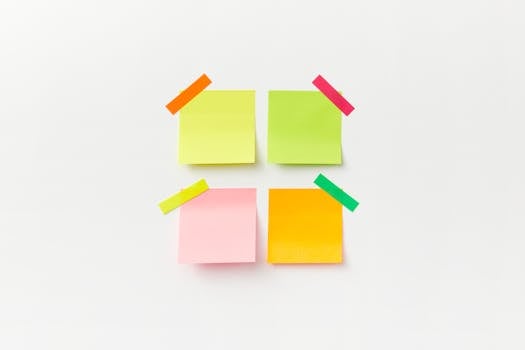Tutorials
Resetting Apps on Android and iOS: Preserve Your Essential Data
Resetting an app can optimize your device without losing valuable data. Learn how to safely perform this task on Android and iOS.
Advertisement
Resetting an app can be a challenging task, especially when issues arise and disrupt the user experience. In many cases, users find themselves wondering how to restore settings without losing important data. This situation becomes more common with the heavy use of mobile devices, such as those on Android and iOS.
With constant browsing of apps, crashes and errors can occur. If you're experiencing performance issues or frequent crashes, resetting the app may be a clear solution. We'll continue with a guide that shows you how to reset settings without erasing essential data.
Any user can apply these simple steps, regardless of technical skills. Let's determine how to restore an app without sacrificing the valuable information stored within it. Here, we'll present a helpful step-by-step guide for Android and iOS.
Understanding App Reset
Resetting an app means restoring its default settings. This often resolves bugs without affecting user data. Understanding this concept is crucial.
Applications can experience a variety of issues, from crashing on startup to slowing down. These issues can be caused by incorrect settings or corrupted files. Therefore, resetting them is a practical solution.
When you reset your device, the idea is to return your settings to their original state. However, storage, such as photos and messages, usually remains intact. This approach prevents the loss of valuable information.
Furthermore, each operating system has its own way of performing the reset. Therefore, it's important to know how to do it on both Android and iOS. This ensures efficient processing and satisfactory results.
Finally, we'll detail how to reset the app on both platforms, ensuring your device runs optimally and efficiently. Below, we'll walk you through each step.
Resetting Apps on Android
To reset an app on Android, start by accessing your device's settings. You'll typically find this in the main menu. Visual elements help you quickly locate the appropriate section.
Once you've accessed Settings, locate "Applications" or "Application Manager." This section provides a detailed overview of all installed apps. Clarity is crucial at this stage.
Once in the list, select the app you want to reset. It's crucial to choose the correct app to avoid losing data from other services. Attention to detail makes all the difference here.
In the app menu, you'll see options like "Clear Cache" and "Clear Data." Click "Clear Data" to reset, but be careful. This may delete some app-specific settings.
Finally, return to the app and launch it again. You'll see that the app has launched as if it were the first time, but without losing essential information, such as saved contacts or media.
Resetting Apps on iOS
On iOS, the app reset process is also simple and intuitive. Open the "Settings" menu on your device. The user-friendly interface makes it easy to navigate between options.
Next, find the "General" section, where various system settings are available. This section is comprehensive and allows you to quickly access other areas. Navigate to "iPhone Storage."
Once you locate "Storage," you'll see a list of installed apps. Choose the app you want to reset. Make sure it's the correct one for a smooth reset.
Within the app's page, click "Delete App." This action is necessary to completely remove the app, but it doesn't delete data from your iPhone. This ensures that information remains accessible.
After deleting, return to the App Store and reinstall the app. When you reopen it, all essential information on your iPhone will be unaffected, and the app will work properly.
Differences between Clear Cache and Clear Data
It's vital to understand the differences between "Clear Cache" and "Clear Data." Both actions have distinct functions, even though they're often confused by users. Let's clarify these terms.
Clearing cache means deleting temporary files that help the app run faster. It's a lightweight action that only removes non-essential information. This is a safe option for those who want to keep important data.
On the other hand, clearing data involves deleting app settings and persistent information. This action can result in the loss of personalized settings and other information. Precautions are crucial here.
When deciding what action to take, consider what you're looking for. If the app is slow, clearing the cache is the most effective way to start. However, if the app has completely crashed, clearing data may be necessary.
Therefore, identifying the problem is essential to choosing the appropriate solution. Understanding these differences will help you maintain your device and optimize essential features.
Using Diagnostic Tools
Diagnostic tools can be useful for troubleshooting application issues. Some devices have built-in features to detect issues. This can be a great help in troubleshooting issues.
These tools can test application integrity and identify common errors. A better understanding of these tools can help pinpoint a specific issue. A thorough analysis can prevent unplanned data loss.
Additionally, many app developers offer support and diagnostic options within the app itself. Explore the help menu, as it can offer quick and straightforward solutions.
Regular testing can also prevent more serious failures in the long run. It means having a regular maintenance system for your device and applications. Staying one step ahead is always advantageous.
Finally, consider participating in online communities. Platforms like forums are great places to find tips and share experiences with other users. Exchanging information strengthens collective problem-solving.
Back Up Data Before Reset
Performing backups before any reset is a safe practice. While resets don't erase essential data, it's better to be safe than sorry. A backup ensures everything is safe.
On Android, you can back up your data to Google Drive or Google Photos. Configure these options in the backup and restore settings. Make sure all important data is backed up.
For iOS users, iCloud is an efficient solution. Enable data sync with iCloud and back up your data, ensuring that crucial information is protected. This makes the transition after resets easier.
In addition to iCloud, iTunes also allows for full device backups. Use this tool if you prefer to manage your data manually. Each option has its advantages, so choose the one that best suits your needs.
Finally, reviewing your backup regularly is essential. Sometimes we forget to save important information or documents. Effective management prevents headaches in the future.
Wrapping Up: Preserving Your Data
Resetting an app can be an effective solution to resolve issues without sacrificing user data. By following the instructions, you can optimize your device's performance. Keeping essential data safe is the primary goal.
Approaches vary between Android and iOS, but the essence is the same. Whenever you encounter issues, consider resetting before taking other, more drastic measures. This is a cautious strategy.
In addition to resetting apps, always keep regular backups. This simple practice can save a lot of valuable information, avoiding future complications. Overloading your device with accumulated data is not a smart choice.
Following the steps below ensures a safe and efficient reset. An optimized phone is an essential accessory for our daily routines. Try the techniques outlined and see the improvements.
Finally, always keep an eye on your app updates. Staying up-to-date helps prevent bugs and keeps your device running smoothly. Any issues can be resolved!





